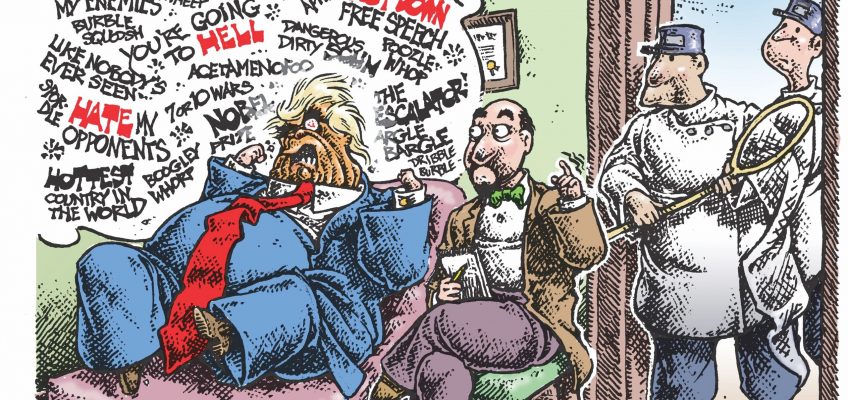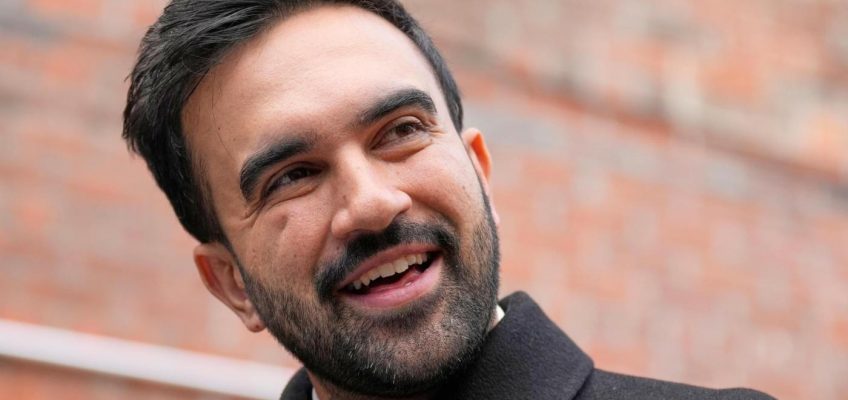Good thing the Abui tribe no longer headhunts. Although on Indonesia’s remote Alor island, a village elder menacingly pointed a rustic bow and arrow at me, his time-etched face stoic and his white hair capped by a candelabra-like ornament of feathers. A sharpened machete protruded from a sheath belted to his one-shouldered ancestral sarong.
Turns out, accompanied by beating drums, clanging gongs, and shrill unnerving shrieks, this was part of an Abui welcoming rite. After that hello, I soon joined traditionally dressed villagers in the emotionally stirring “lego-lego” circle dance, our arms interlocked around other’s waists in a powerful, joyful symbol of unity. The women’s brass ankle bracelets rhythmically jangled with each barefooted stomp (even when I accidentally trampled their toes).
The lego-lego dance, a tradition of the Abui people on Alor island, symbolizes community solidarity and harmony. (Photo by Norma Meyer)
Elsewhere, in other far-flung corners of the vast Indonesian archipelago, I’d sip homemade hootch with a different ethnic clan, get frighteningly close to wild, hissing Komodo dragons, and be among honored guests at a water buffalo race in a muddy-wet rice paddy.
An Indonesian fishing boat is a contrast to the Ponant cruise ship in the low-touristed West Papua province. (Photo by Norma Meyer)
I had this remarkable opportunity to visit communities rarely seen by outsiders because, along with 114 fellow passengers, I sailed on a superb Ponant expedition cruise with an enterprising itinerary — and inflatable Zodiacs to ferry us to heritage-brimming distant shores. There are scores of languages (Alor itself has 19), dialects and customs in these diverse, colorful hinterlands that heavily depend on subsistence fishing and agriculture; however, wherever we traveled during Ponant’s 13-day island-hopping “Tropical Indonesian Odyssey,” villagers were extremely friendly and enthused to meet strangers from the sleek Le Jacques Cartier ship. When leaving various places, some local men, women and children formed the heart sign with their curved fingers and warmly projected it at us.
Ponant’s surprise “hydration station” offers up French Champagne to Zodiac passengers exploring Triton Bay, Indonesia. (Photo by Norma Meyer)
In unpopulated realms, we relished the striking, natural beauty of the pristine West Papua region; our 10-person Zodiacs glided through emerald-green bays dominated by jungle-coated limestone pinnacles vaulting from the seas. After our raft navigated a lush bend before noon on a hot day, surprise! We came upon Ponant’s “hydration station,” a floating Zodiac with two employees pouring chilled, brut Henriot Champagne into flutes for us thirsty adventurers. Ponant is a French-based luxury cruise company so we enjoyed many fun ooh la las on our 2,376-mile voyage.
Another early morning, a pair of lengthy, decorative kora kora war canoes — each filled with 30 rowers boisterously chanting in concert — popped up alongside our ship to theatrically escort it into the submerged volcanic caldera of Banda Neira island. Known as one of the fabled “Spice Islands,” the colonial, blood-soaked history of Banda Neira would soon unfold.
First, though, we were cheerily entertained by island singers and dancers, all brightly attired in festive clothes, the women’s hijabs adorned with flowers in this predominantly Muslim enclave. Centuries ago, the Banda Islands were the only spot in the world that grew nutmeg and sister spice mace, both from native myristica trees.
“Very expensive. In the middle centuries, nutmeg cost more than gold,” said my local guide named Mr. Man.
Despite its brutal history in the Banda Islands, nutmeg fruit is still grown there. The hard seed inside produces the nutmeg spice; the red wrapping around the seed is the spice called mace. (Photo by Norma Meyer)
Eventually, the Dutch wanted a complete monopoly of the lucrative nutmeg trade, so they conquered Banda Neira and ultimately “killed or starved 14,000 inhabitants; the 1,000 left became slaves,” he said, We were standing in the grassy field of crumbled Dutch Fort Nassau, the landmark scene of a massacre. “The Dutch paid Japanese samurai to come over and on May 8, 1621 they killed 44 Bandanese family leaders right here,” adding that victims were grisly quartered and their decapitated heads flaunted on bamboo poles.
Mr. Man next ushered my small group into Fort Belgica, where we entered the pitch-black, dank, bat-occupied former jail cells of Bandanese men and women. Finally, he had us linger in the haunting “executioner’s room” while he dropped to his knees and put his head on a chopping block in a disturbing demonstration.
Mysterious moko drums sit on an Abui tribe altar. The Abui people believe mokos came from the gods, although scholars don’t know why mokos were found buried on the island of Alor. (Photo by Norma Meyer)
Every island had a story that inhabitants wanted to share. Alor, where we met the Abui tribe, is called “The Island of a Thousand Mokos” because mokos — bronze hourglass-shaped kettledrums — have been mysteriously dug up from the ground since ancient times. Mokos have roots dating back 2,000 years in Vietnam but no one knows how they arrived at this Indonesian outpost and why they were buried. They’re still being unearthed on Alor.
Local boatmen get a look at Ponant’s Le Jacques Cartier cruise ship, anchored off Alor island in Indonesia. (Photo by Norma Meyer)
Littler mokos, say 20 inches tall, now function as musical instruments but more importantly as dowries for a potential groom to pay the bride’s family. (A popular saying in Alor is: “No moko, no marriage.”) Larger mokos “are more ceremonial, especially to call for the rain or to stop the rain,” said Yanti, a docent at a modest museum exhibiting these mystical status symbols.
A lethal Komodo dragon appears quite close to onlookers in Komodo National Park. (Photo by Norma Meyer)
As for revered icons, scaly nightmarish ones eyed us on Komodo island in Komodo National Park, a UNESCO World Heritage Site. There are only a few places on Earth — mainly Komodo but also some neighboring Indonesian islands — where Komodo dragons roam in their natural habitat, searching to sink their serrated teeth and poison into their next meal. These bruisers can weigh up to 300 pounds and span up to 10 feet long.
It gets scarier. The primeval lizards also harbor over 50 strains of bacteria in their mouths and their venomous saliva contains an anticoagulant and toxins that induce blood loss, shock, and paralysis in its victim. If bitten, its prey (deer are a favorite) may escape but normally dies within four days. Komodo dragons can sniff out the carcass from 2.5 miles away to feed on it.
These guys may seem thirsty but when it comes to food, Komodo dragons can consume up to 80% of their body weight and not eat again for a month. This is in Komodo National Park. (Photo by Norma Meyer)
“People are usually not on their diet,” assured Alfaruk, my resident Komodo guide. He then told of a villager who was collecting honey from a beehive when a dragon ambushed and gnawed him to shreds.
In addition to Alfaruk, we were chaperoned by park ranger Sahado, who carried a 6-foot-long, two-pronged wooden pole to thwart any attacks on us. Sahado said he could immobilize a dragon by pressing the stick on its thick neck. Hopefully I wouldn’t find out if that questionable defense worked.
Komodo dragons, seen here at Komodo National Park, are the largest, heaviest lizards on the planet. (Photo by Norma Meyer)
We’d been walking on a dusty trail — Alfaruk pointing out fresh icky Komodo scat — when suddenly seven massive dragons appeared out of nowhere around a watering hole. It was like stumbling upon dinosaurs. Fascinating and freaky, the legendary reptiles lumbered unevenly on all four legs and constantly flicked out their creepy forked tongues. The noisy racket of hissing was straight from a monster movie. A couple of them bumped against each other as if to fight. (They’re also cannibals who eat one another.)
Alfaruk drew a line in the dirt and told us to not go past, although a few dragons were already just a couple yards away. “Get back! Get back!” he soon shouted as one inched closer. Incidentally, those forked tongues can smell out prey.
Interestingly, most islanders believe dragons are spiritual guardians, even ancestors, and honorably refer to them as “oras.” Such awe stems from a feel-good, harmonious Indonesian folktale about twin siblings born to the Dragon Princess — one human and the other a Komodo named Ora,
The Blue Eye is an underwater cocktail lounge aboard Ponant’s Le Jacques Cartier ship and others of its explorer fleet. (Photo by Norma Meyer)
After excursions and reef snorkeling, passengers basked in our 92-cabin buoyant hotel and perhaps more specifically, the spaceship-like underwater bar, the Blue Eye. Cast in bluish neon tones, the lounge is intended to make guests feel like they’re inside a whale — two large oval portholes are supposed to micmic a cetacean’s eyes from where you can view real marine creatures in the sea. (I’d been in a Blue Eye on another terrific Ponant cruise and like this time I didn’t see anything); also the ceiling’s frame is designed to resemble a whale’s skeleton. I blissfully zoned out on a Blue Eye curved couch one afternoon during an, om, serene meditation session led by a crew dancer and her velvety soothing voice. At night, the Blue Eye featured both Beatle and ABBA events with songs and video backdrops.
The pool deck of Le Jacques Cartier is a great place for al fresco dining or drinks. (Photo by Norma Meyer)
Among other onboard highlights: educational talks by our naturalists (separate lectures in English and French), water aerobics in the pool, cha-cha lessons, choux pastry tea time, and a themed White Party. But nearly everyone focused on the upcoming intriguing community we’d call upon. Also, great to know Ponant donates money and supplies to villages we visited. (This itinerary next departs June 17, from $10,650 per person, although other Ponant cruises include some of the same stops; us.ponant.com.)
Shopkeepers in the village of Ngilngof sell wares just across from beautiful Ngurbloat Beach in the Kei Islands. (Photo by Norma Meyer)
Our very first people encounter, on the powdery white Ngurbloat Beach of Kei Kecil island, showcased the immense pride and venerated traditions we’d witness with all our hosts. While Ngilngof village matrons sang with outstretched arms, a male elder strolled around to toss blessed coconut water on us.
Local kids play on Ngurbloat Beach, a gorgeous stretch of coconut tree-fringed soft sands in the Kei islands, Indonesia. (Photo by Norma Meyer)
“He sprinkles it for purification of ourselves,” Ichwan, a local, later told me. “It puts out positive vibes of the environment to support the tourists.”
Fearsome, bare-chested young men whooped and jumped with bows and arrows during the cakalele war dance, repeated for centuries especially before or after tribal battles. “This is the spirit of their ancestors,” Ichwan explained.
In the Kei islands, a young man readies to perform the cakalele war dance, a sacred custom once done before and after battles. (Photo by Norma Meyer)
On Flores island, in Sikkanese-speaking Watublapi village, an intense ritual culminated with an agile warrior scampering up a soaring pole and balancing atop it on his back and stomach. Here, the hospitable Sikka indigenous people offered each of us gifts in halved coconut shells, including hand-grown tobacco cigarettes wrapped in corn husks, (a non-smoker, I took a few puffs out of respect) homemade booze concocted from fermented palm tree sap (it was strong!) and betel nut, an addictive stimulant that has been chewed for millennia and permanently turns users’ mouths red and teeth black (no thank you). The latter is actually areca nut enclosed in a betel leaf and taken with slaked lime, a white chemical compound found in plaster.
A member of the Sikka ethnic group wears traditional clothing in the mountainside Watublapi village on Flores island. (Photo by Norma Meyer)
I opted for the delicious dark sticky rice cakes instead. Nearby, tribal girls and their moms sat on thatched mats and spun cotton, dyed threads from plants, and laboriously wove traditional ikat textiles, a method said to date back 5,000 years. In this region, both men and women wore ikat fabrics, often as sarongs and incorporating geometric patterns or birds or flowers.
Handwoven ikat textiles, such as these in Watublapi village, are made and worn by various ethnic groups throughout the Indonesian archipelago. (Photo by Norma Meyer)
Another day, on Sumbawa island in Pamulung village, I pounded rice, a hallowed tradition we observed in other settlements with female members in cadence pummeling a giant pestle into a mortar to detach hard hulls from the edible rice. Pamulung women often smear their faces with a paste made from rice flour and turmeric powder; the masks supposedly act as a sunscreen and keep their skin looking young.
A Sumbawa woman wears a face paste of rice flour and turmeric powder as a sunscreen and beauty aid, a popular treatment in her Pamulung village. (Photo by Norma Meyer)
And now the big splash. Pamulung has raced water buffalo for eons to laud the annual planting of rice, and in our honor a raucous contest was held. For each adrenaline-fueled individual attempt, a pair of yoked horned entrants, some festooned with facial decor, madly dashed straight ahead through a flooded rice field, while their teetering jockey tried to balance on a slat of wood and often plunged into knee-high sludgy water. Multiple bovine teams took turns competing; the winning buffalo would be the fastest who knocked into a target stick in the water. A shaman was still tallying results when we left.
A jockey tries to steer his water buffalo team on the flooded rice field racecourse in Pamulung village. (Photo by Norma Meyer)
Yes, I was on a five-star cruise, but I experienced true riches on our visits — the villagers’ enormous respect for ancestors and age-old traditions, a profound responsibility and love of community, and a deep-seated kinship with nature. I sensed it all when dancing the bonding lego-lego dance in a circling line with my 30-plus new Abui friends, arms locked around each other’s waists or over shoulders, in the humble hilltop village of Latafui.
In Latafui village, on Alor island, the Abui indigenous people exude a feeling of togetherness while continuing ancestral customs. (Photo by Norma Meyer)
“Lego-lego has a meaning,” a tribal representative said. “It means when a family has something bad happen, others will come and cheer them up or help. And when they have glory, they will all celebrate together.”
Sacred moko drums, a connection to divine spirits, perched on the tribe’s stone altar. A smiling red-lipped woman offered us betel nuts from her fu’ulak, a woven bamboo bag, And at the end, we all were asked to please stay a few minutes longer. Every tribe member wanted to personally thank each one of us and shake our hand.
Related Articles
Portuguese island is a hiker’s paradise
See Al Pacino’s ‘Scarface’ shirt, Tom Hanks’ ‘Apollo 13’ spacesuit in new exhibit
National Geographic’s 25 best destinations to visit in 2026
Feeling right at home in Scotland
One Tech Tip: iPhone users can now add US passport info to their digital wallets




